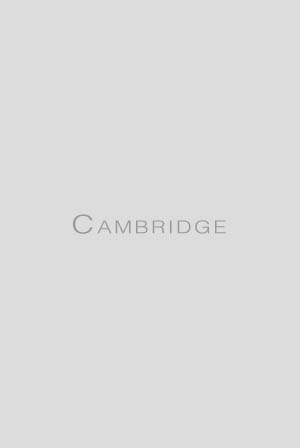No CrossRef data available.
Article contents
3.0 FIELD RELEASE AND SUPPRESSION OF SPRUCE BUDWORM: 3.1 THE FIELD TEST SITE
Published online by Cambridge University Press: 31 May 2012
Abstract
An abstract is not available for this content so a preview has been provided. Please use the Get access link above for information on how to access this content.

- Type
- Other
- Information
- The Memoirs of the Entomological Society of Canada , Volume 122 , Supplement S153 , 1990 , pp. 25 - 30
- Copyright
- Copyright © Entomological Society of Canada 1990
References
REFERENCES
Anon. 1965. Algoma-Cochrane, Surficial Geology. Ont. Dep. Lands For., Toronto, Ont. Map S365.Google Scholar
Blais, J.R. 1983. Trends in the frequency, extent, and severity of spruce budworm outbreaks in eastern Canada. Can. J. For. Res. 13: 539–547.Google Scholar
Boissoneau, A.N. 1966. Glacial history of northeastern Ontario. I. The Cochrane–Hearst area. Can. J. Earth Sci. 3: 559–578.Google Scholar
Brown, C.E. 1970. A cartographic representation of spruce budworm Choristoneura fumiferana (Clem.) infestation in eastern Canada, 1909–1966. Dep. Fish. For., Can. For. Serv., Ottawa, Ont. Publ. 1263. 4 pp. + insert.Google Scholar
Bryson, R.A., and Hare, F.K.. 1974. The climates of North America, pp. 1–47in World Survey of Climatology, Vol. 11. Bryson, R.A., and Hare, F.K. (Ed.), Climates of North America. Elsevier Scientific Publishing Co., Amsterdam–London–New York.Google Scholar
Hare, F.K., and Thomas, M.K.. 1974. Climate Canada. Wiley Publishers of Canada Ltd., Toronto, Ont.256 pp.Google Scholar
Houseweart, M.W., Jennings, D.T., Pease, S.H., and Lawrence, R.K.. 1984. Alternate insect hosts and characteristics of forest stands supporting native populations of Trichogramma minutum Riley. Misc. Rep. 300. Vniv. Maine at Orono, Coll. For. Resour., Res. Bull. 5. 32 pp.Google Scholar
Kemp, W.P., and Simmons, G.A.. 1978. The influence of stand factors on parasitism of spruce budworm eggs by Trichogramma minutum. Environ. Ent. 7: 685–688.Google Scholar
Miller, C.A. 1953. Parasitism of spruce budworm eggs by Trichogramma minutum Riley. Dep. Agric., Div. For. Biol., Bi-Monthly Prog. Rep. 9(4): 1.Google Scholar
Morris, R.F. (Ed.). 1963. The dynamics of epidemic spruce budworm populations. Mem. ent. Soc. Can. 31. 332 pp.Google Scholar
Rowe, J.S. 1959. Forest regions of Canada. Dep. Northern Affairs and National Resour., For. Br. Bull. 123. 71 pp.Google Scholar
Sanders, C.J. (Comp.). 1980. A summary of current techniques used for sampling spruce budworm populations and estimating defoliation in eastern Canada. Dep. Environ., Can. For. Serv., Sault Ste. Marie, Ont. Inf. Rep. 0-X-306. 33 pp. + appendix.Google Scholar
Thomas, H.A. 1966. Parasitism by Trichogramma minutum (Hymenoptera: Trichogrammatidae) in the spruce budworm outbreak in Maine. Ann. ent. Soc. Am. 59: 723–725.Google Scholar


